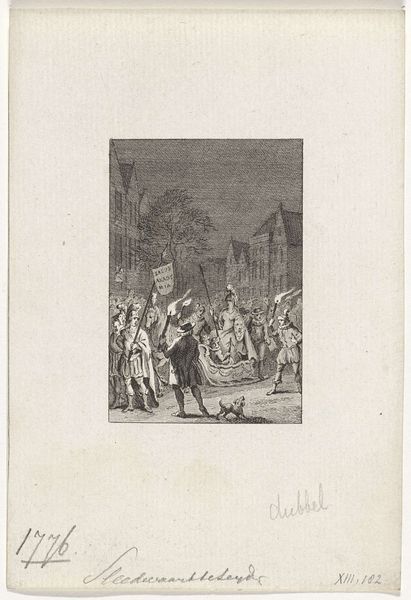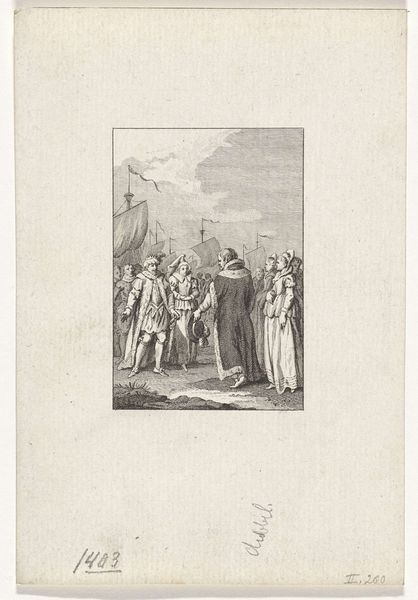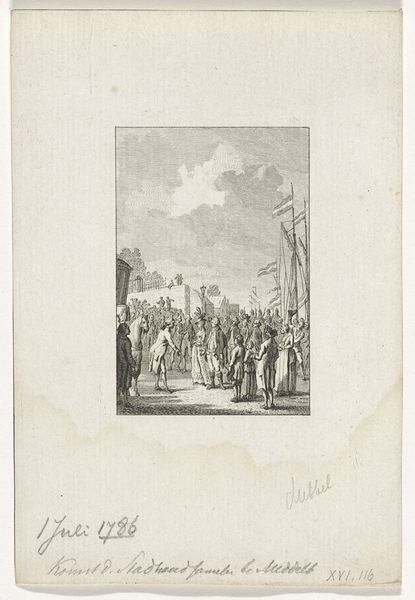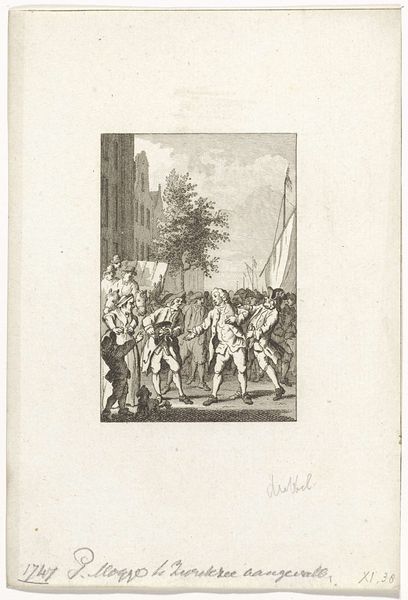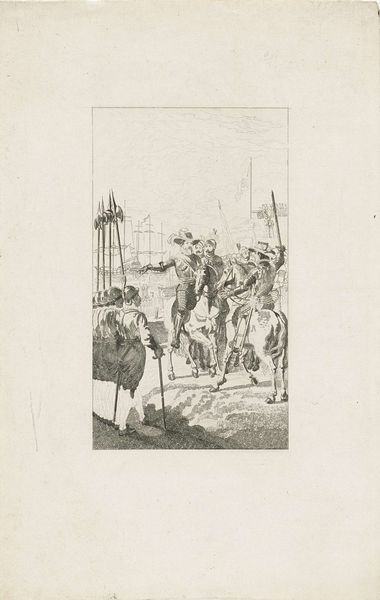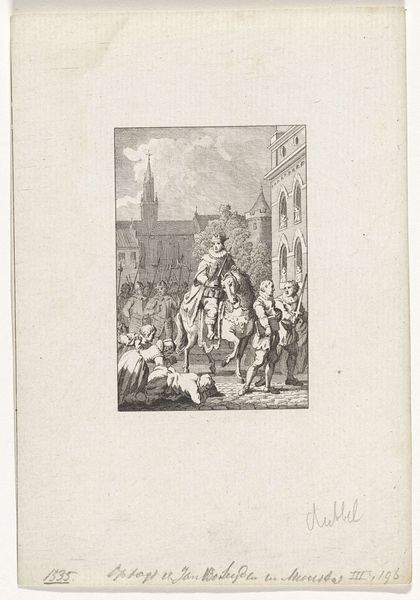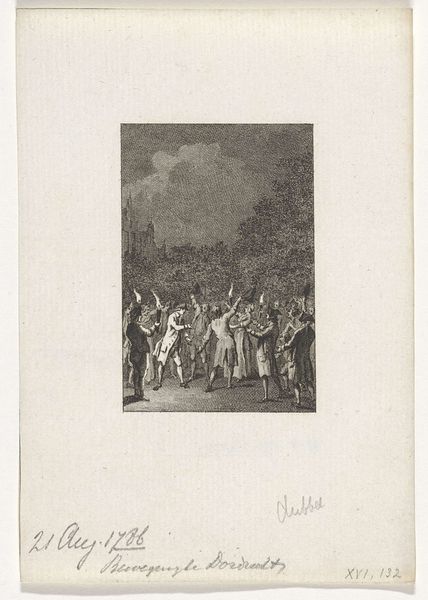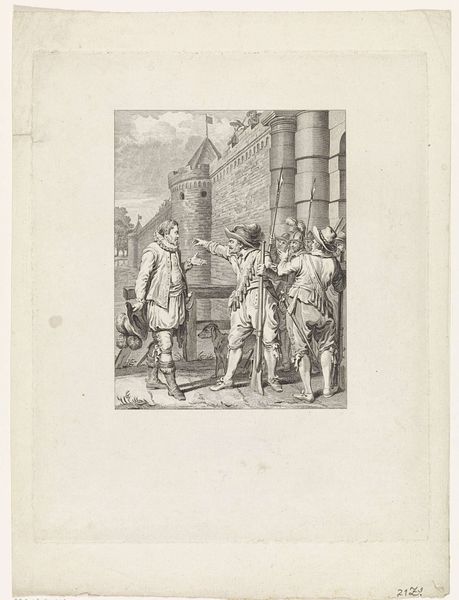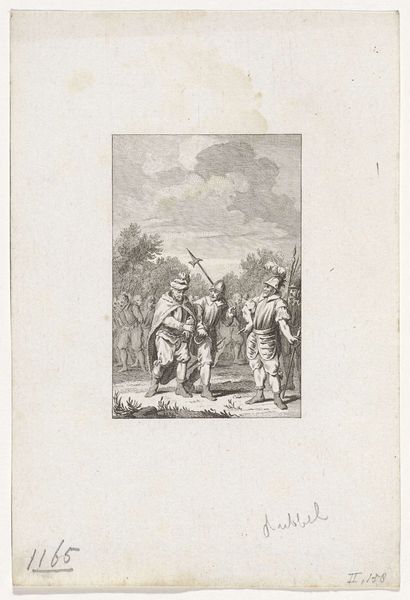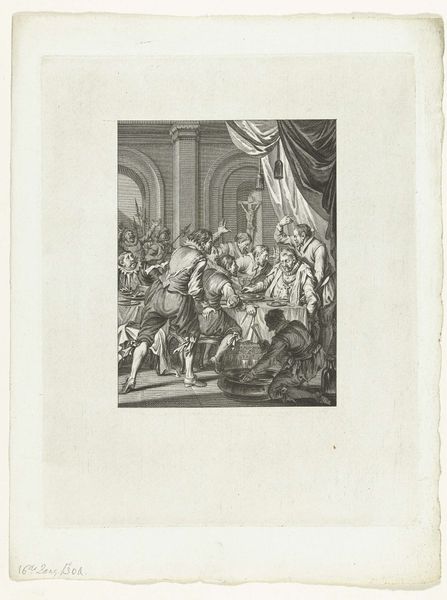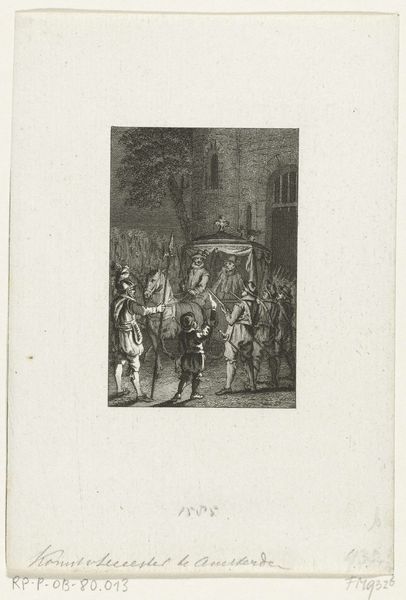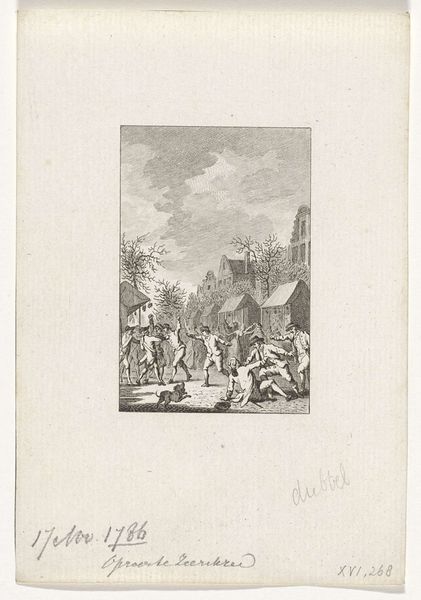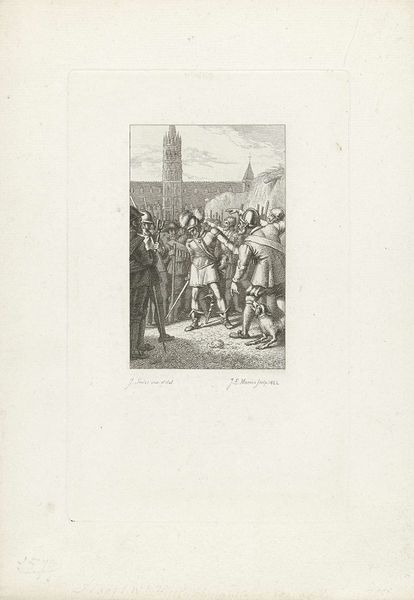
Admiraal Blois van Treslong gevangen genomen en naar het Gravensteen te Middelburg gebracht, 1585 1783 - 1795
0:00
0:00
Dimensions: height 160 mm, width 100 mm
Copyright: Rijks Museum: Open Domain
Curator: This is Reinier Vinkeles's print from between 1783 and 1795, entitled 'Admiraal Blois van Treslong gevangen genomen en naar het Gravensteen te Middelburg gebracht, 1585,’ housed here at the Rijksmuseum. Editor: It feels incredibly austere, doesn't it? The limited palette, the linear precision... there's a real gravity in the way the figures are rendered. Curator: The artist aimed to represent a key historical moment. This print portrays the capture and subsequent imprisonment of Admiral Blois van Treslong, a significant event during the Eighty Years' War. Considering power dynamics and colonial resistance provides critical insights here. Editor: Right. The visual weight feels meticulously considered. The Admiral is the clear focal point in terms of costume, surrounded by his captors but nevertheless prominent, leading you to think about status and what it means to produce an image about captured leaders. The social and political circumstances have an undeniable influence on production. I am very interested in how many editions were created and distributed. Curator: Precisely, and his position within this tense procession becomes symbolic of Dutch resilience during this tumultuous era. He strides into the Gravensteen—representing imprisonment and occupation. Editor: Absolutely. What strikes me most is that even though it is a historical picture and one with such a specific focus, the actual process of creation, the labor invested in each line of that engraving, speaks volumes about the broader political economy that made art production possible in the Netherlands at this time. Curator: And understanding that economy provides context. Thinking of resistance and colonial legacy provides essential critical and historic understandings. Vinkeles doesn't simply depict a historical event. Editor: It’s not simply representation. For me, the materiality elevates this piece. I mean, to consider all the raw materials involved in making a print is interesting! The physical weight is meaningful and is not something one thinks about very often when reflecting upon historical drawings like this one. Curator: Indeed. By situating it within discussions of nationalism, resistance, and even constructions of masculinity, we unlock its potential as more than just a historical record. It reflects broader discourses of power and identity that still resonate today. Editor: Ultimately, this print urges us to question the processes that give it historical meaning but to question the physical act of creating these enduring political imageries.
Comments
No comments
Be the first to comment and join the conversation on the ultimate creative platform.
